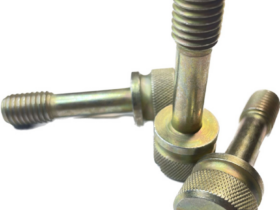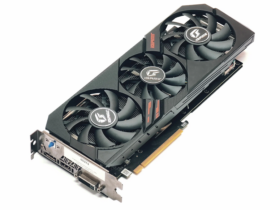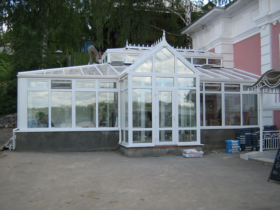According to official figures, Russia annually produces about 10 million. seedlings of fruit crops. Farms specializing in seedlings are guided in their work by modern standards for planting material (GOST 4938: 2008). These technical requirements define both phytosanitary status and biometric parameters of various types of seedlings in the context of cultures and processes. So why then gardeners so often suffer from the low quality of planting material?
The garden is an expensive thing, especially if it is an intensive garden and you need to plant an average of 2.5-3 thousand per 1 ha by 1 ha. trees. High -quality seedlings of apple trees (of course, subject to all agrotechnical requirements), already in the year of planting them in the garden can be thanked by a tangible crop — 5-8 t/ha in. The ambitious goal of the next two years is to recoup the costs of creating a stand. One of the prerequisite for its achievement is the use of high -quality seedlings with the crown. Therefore, it is not profitable to save on seedlings.
The only real way of preserving the funds is to grow high -quality planting material for yourself. And despite the fact that this path is not too civilized, it is they who are undergoing a large number of farmers. They grow seedlings primarily to expand their economy, and the remnants are already realizing.
Gardeners are still arguing what the best seedlings are for an intensive garden: crowned annuals or two-year-old two-year-olds type Knip-Baum?
The Dutch, namely, they invented Knip, give preference to two -year -olds. German seedlings even learned how to grow and profitably sell the “Knip-Baumi” cherries and other bone crops. The average price of one such a seedling is 5-6 euros.
At the same time, representatives of the authoritative Italian companies “Matsoni”, “Salvi”, “Clement” assure that there is no fundamental difference between one — and two -year -olds, unless, of course, learn to grow high -quality annual seedlings with floral buds formed on them.
US nurses also produce annuals. You can argue about the features of the climate, different durations of the growing season, but the general world tendency is to grow a high -quality seedling at the lowest cost.
In Russia, most of the planting material of fruit crops is grown by fencing in the first field of the seedlings of seedlings, that is, annual seedlings are received in a two -year cycle. Some nurseries grow two -year -olds, but also for two years using winter vaccination (forming traditional two -year -olds for 3 seasons is too expensive). Each type of planting material has both their advantages and warnings.
The main advantage of crowned one-year-olds is that they are 25-50% cheaper than “Knip-baums” and classic two-year-olds. In addition, annuals take root better and grow in the garden, they are generally less whimsical, which is far from exemplary from the technological discipline of our farms is significant.
In crowned annuals, the side branches usually have a wide angle of discharge from the central conductor (at least 60), which contributes to the formation of fruit buds on them. With proper care of such seedlings, already in the year of landing in the garden, it is really possible to get the first fruits, and next year — 12-15 t/ha of the crop. Expected investment payback-in the 4-5th year.
Therefore, it is worth taking advantage of the experience of a number of Russian nurseries, where they learned to grow annual seedlings of apple trees and pears (about bones separately) with 5-7-pane branches. Below are the main components of success.
High -quality stocks
Almost unrealistic to grow crowned seedlings from thin weakly rooted strands. First of all, we will talk about autonomic (clone) stocks, which are propagated by vertical layers in the motherware. These are popular dwarf and semi-caralic processes of apple trees: M9 with its many clones (T337, EMLA, RN19 and others), PB9, D1071, M26, MM106, 62-396, 54-118; pears: Aiva Adams, VA29, IS 2-10 and other forms of quince; Some vegetative bone stocks: COLT, F 12/1 (Cherry, Cherry), VSL-2 (Cherry, Dyuki), Eureka, Pumi Selekt (Plum Group). When buying these processes from manufacturers, you should make sure that the motherware in which they are grown are certified. If the task is to create your own uterine, then the planting material for it should belong to the category of the base with the corresponding virological status (tested for viruses, or healed). Such a motherist will be highly productive, the layering from it will be leveled, with good biometric indicators.
It should be remembered that the so -called high fencing is currently being used for cloning processes. Thanks to this, the influence of the stock on the vaccination part of the seedling intensifies. In the garden, such a tree begins to get into fruit faster, it is not so intensively growing. Therefore, selecting layering, you should pay attention not only to their rooting, but also to the development of the stem. The stocks should have a long even trunk with a thickness (attention!) at the level of the location of the future cultivation, namely at an altitude of 30-35 cm above the heel (place of cutting off from the uterine bush) at least 6 mm.
Seed stocks, on which seedlings of bone crops are mainly grown, should also be first-grade, namely: to have an extensive root system with a length of at least 15 cm and the diameter of the root neck of 6-8 mm.
Fresh land
It is best to plant stocks in areas where fruit crops have not been grown before 20 years (at least 7 years). Over the past decade, most leading nurseries have abandoned traditional crop rotation. It turned out that the crop rotation does not completely solve the problem of soil fatigue. In addition, there are more and more aggressive strains of mushroom and bacterial pathogens of dangerous diseases, which, accumulating in the soil, pose a greater threat. Therefore, the simplest solution to the issue is the laying of the first field on a new, usually rented area. An important condition is the possibility of irrigation of the field.
Schemes of planting of strands
The crowned seedling requires space, and, consequently, successfully selected plant placement schemes. The width of the rowpot when planting the strands is chosen according to the principle of convenience of the between the row processing. It can fluctuate from 0.7 to 1.2 m (most often 0.9 or 1 m). The distance between plants in the row is 25-30 cm. It is important to correctly direct the ranks, namely from north to south, because optimal lighting will contribute to the better branching of seedlings.
The planting of the strands can be carried out both in the fall (immediately after they are dug in the school or the department in the uterus) and early in the spring. The period of autumn landing is, depending on the region, at the end of October-November, the spring-March first half of April. Experience accumulated in nurseries indicates that in autumn you can plant almost all clown and seed stocks. Cases of mass freezing of them in the winter were not recorded. The exception is only the forms of quince (cloning piercing pears), which are recommended to be planted only in the spring.
Autumn landing has some advantages:
during periods when the soil temperature is higher than +2 degrees Celsius, the root system of the processes is regenerated, the plants take root and in the spring they have intense growth faster;
The problem of storage of processes in winter disappears;
Organizational benefits, because early nested work is carried out in a short time, which often coincide with other technological events in the nursery.
The planting of the strands is usually performed manually in pre -chopped gaps or furrows. Ensure that the roots of autonomic strands are placed at a depth of 15-18 cm from the surface of the soil, and the root neck in seed stocks is at the soil level (its maximum deepening is 1 cm). After planting, the aboveground part of the autonomic strands is cut at a level of 35-40 cm, and seminal-20-25 cm above the surface of the earth. Further, the stock is well watered. Carriage of stocks in the period before the fencing should contribute to their active growth. We are talking about a set of so -called nonspecific measures: the destruction of weeds, irrigation, top dressing, the struggle against diseases and pests. Also clean the lower part of the trunks of the bands from lateral branches: before the fencing, they should be smooth and convenient to work.
High -quality cuttings
They are cut from special uterine-blacks, or, as an exception, from the best tested trees in commodity plantations (the second option is contrary to legislative acts, but small nurseries often do this).
High fencing
It is used on vegetative dwarf and semi -caralic strands with the aim, as already mentioned, increased the influence of the stock on the first. It is proved that the method of fencing does not affect the survival of the eyes and the quality of the seedlings, so the seedlings chose the simplest performance and, accordingly, the most productive, namely high fencing. It is performed at an altitude of 15-20 cm above the soil level. Sometimes, at the request of the customer, the glash of the score is placed even higher (about 40 cm). It is very important to carry out the optimon in the optimal time, when both the stock and the pitch of the twist are ready for this. The main criterion is a slight lag of the bark on the stock and the sufficient possession of cuttings (at least 2/3 of their length). The fencing period lasts from the last decade of July to the end of August. In the central and northern regions, it ends earlier — around mid -August.
The cushion of the bonfire should certainly be placed on the north side of the stock so that it does not overheat and does not dry out and does not dry out. Compliance with such a simple rule significantly increases the survival of vaccinations! In addition, the output of standard seedlings increases, they grow even and symmetrical.
Support
The use of pegs or temporary trellises in a nursery contributes to a better growth of seedlings, in particular the formation of lateral branches. Use materials such as bamboo, galvanized iron reinforcement, fiberglass. The last option is the most progressive, especially since fiberglass pegs are light, comfortable, not subject to corrosion, they can be used many times. With the help of a special device every 25-30 cm, the central conductor of the seedling is tied to pegs. The support in the nursery is significant additional expenses, but when growing high -quality seedlings (especially on dwarf stocks), you cannot do without it.
Formation of plants
Special operations for the formation of plants in the second field of the seedlings of seedlings should be performed in the due time:
cutting the aboveground part of the stock “on a cultural kidney” — before the start of the growing season (March);
Removing of proprietary shoots — regularly as they grow (April -May);
Stepsing in the zone of the future stem of the seedling — regularly, as soon as the stepsons (May -June) begin to grow;
instilling (pruning) of the apical leaves without damage to the growth point — from the moment the central conductor reaches a height of 70-80 cm, once a week, only 4-7 times, depending on the kidneys of a particular variety (second half of June — July).
The last green operation should be said separately. Thanks to it, we change the balance of endogenous (those that the plant produces independently) growth hormones, as a result of which the bosom buds awaken and side shoots grow. It is used mainly when growing seedlings of apple and pear, that is, those crops in which it is more difficult to get a crown in a nursery. The swinging of the apical leaves also gives a positive result in the event of the formation of crowned annual cherries. It is often possible to get high -quality seedlings with a crown and without such an intervention, but the number of branches will have less.
The formation of crowned annuals of all bone crops, in addition to cherries, is not associated with significant efforts and occurs relatively easily (provided that the optimal conditions for plant growth in the nursery).













Оставить коммент.